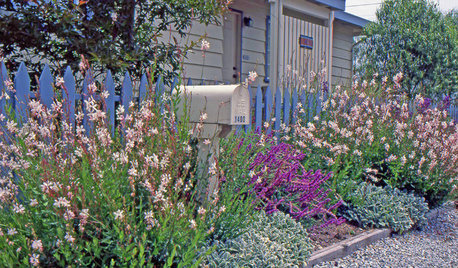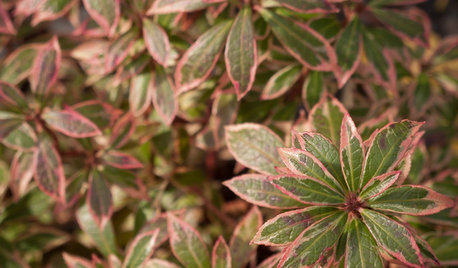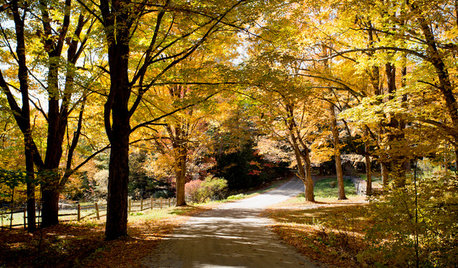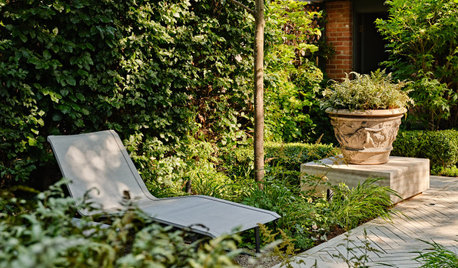Rhododendron 'Delaware Valley White'
jay_7bsc
15 years ago
Related Stories

MOST POPULAR20 Ways to Work White Magic in Your Yard
Create enchanting outdoor spots with fresh white fences, florals and furniture
Full Story
GARDENING GUIDESGreat Design Plant: Gaura Lindheimeri
Delicate, butterfly-shaped flowers ‘float’ above the foliage of this lovely, drought-tolerant perennial
Full Story
GARDENING GUIDESGreat Design Plant: Little Heath Andromeda Brings 4-Season Color
Rosiness in the cool months and fragrant white flowers in spring help make this shrub a winner — and hummingbirds love it too
Full Story
LIFETrue Confessions of a House Stalker
Letting go when a new owner dares to change a beloved house's look can be downright difficult. Has this ever happened to you?
Full Story
GARDENING GUIDESLet's Weed Out 4 Native Plant Myths
Plant wisely for a garden that supports pollinators and requires less work
Full Story
FALL GARDENINGHouzz Call: Show Us Your Autumn Views
Share your pictures of fall foliage and decor in the Comments. Your photos may be featured in an upcoming story!
Full Story
GARDENING GUIDESHouzz Call: What’s Your Favorite Backyard Beauty?
The simple, honest daisy is this writer’s go-to garden flower. We want to hear which plant, flowering or otherwise, gives you special joy
Full Story
GARDENING GUIDESBackyard Birds: Invite Entertaining Hummingbirds Into Your Garden
Hummingbirds — unique to the Americas — zip through open landscapes seasonally or year-round. Here’s how to attract them
Full Story
LIFEHard Winter? 9 Ways to Battle Cabin Fever
We know a lot of you are trapped where it just won’t stop snowing. Here are some ways to survive
Full Story
LANDSCAPE DESIGNHow to Create a Beautiful Shade Garden
Turn the cool, shady spot in your garden into your own quiet oasis
Full StorySponsored






nippersdad
Bumblebeez SC Zone 7
Related Professionals
Allen Landscape Architects & Landscape Designers · Maple Valley Landscape Architects & Landscape Designers · Roosevelt Landscape Architects & Landscape Designers · Brookside Landscape Contractors · Camp Verde Landscape Contractors · Dedham Landscape Contractors · Eustis Landscape Contractors · Federal Way Landscape Contractors · Lady Lake Landscape Contractors · Las Vegas Landscape Contractors · Mesa Landscape Contractors · Palatine Landscape Contractors · Raleigh Landscape Contractors · East Norriton Landscape Contractors · Winter Gardens Landscape Contractorsrazorback33
nippersdad
razorback33
rhodyman
nippersdad